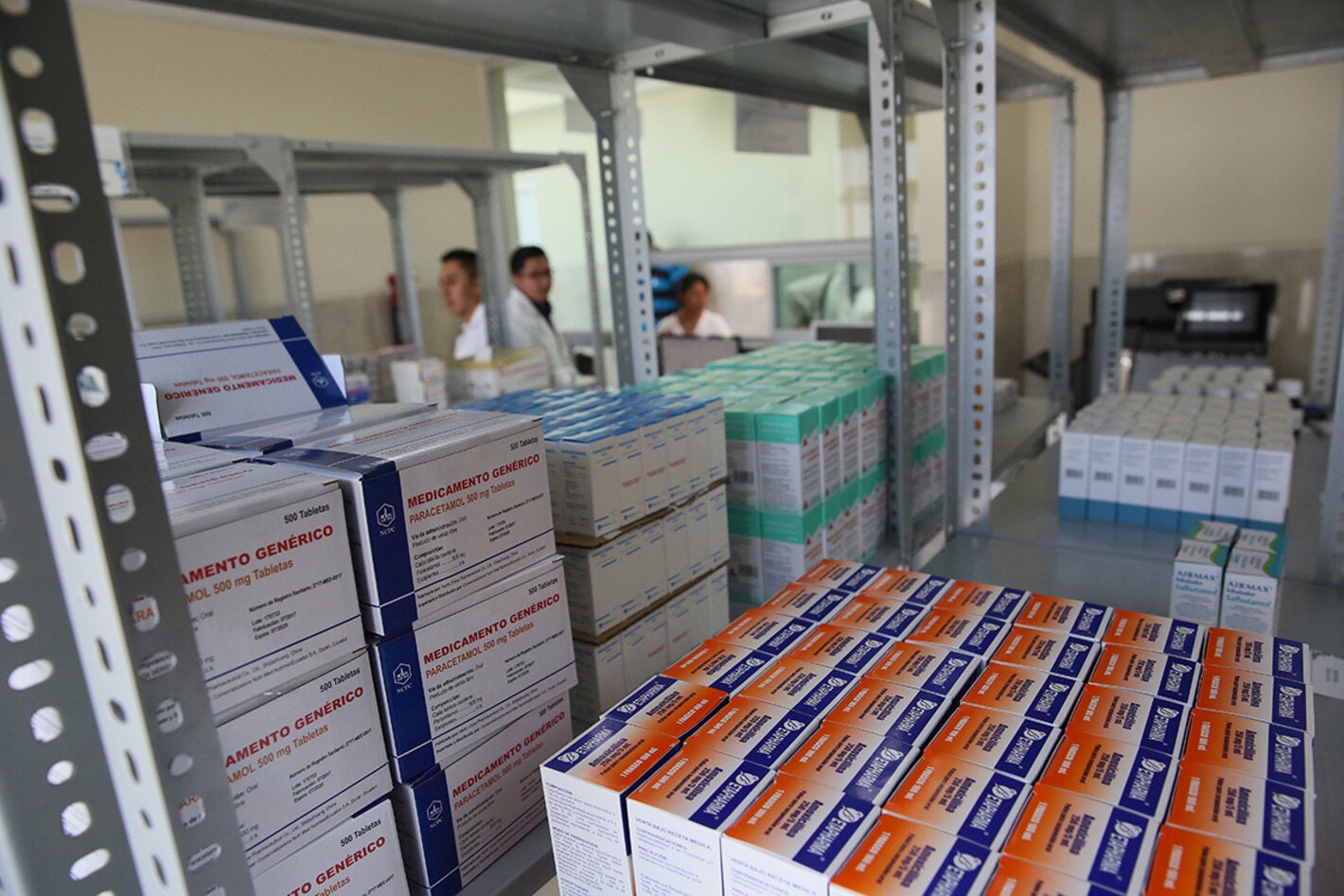
Geneva, July 26, 2019 (PAHO/WHO)– Ahead of World Hepatitis Day (28 July), the World Health Organization (WHO) calls on countries to take advantage of recent reductions in the costs of diagnosing and treating viral hepatitis and scale up investments in disease elimination.
A new study by WHO, published today in Lancet Global Health, has found that investing US$6bn per year in eliminating hepatitis in 67 low- and middle-income countries would avert 4.5 million premature deaths by 2030 and more than 26 million deaths beyond that target date.
A total of US$58.7 billion is needed to eliminate viral hepatitis as a public health threat in these 67 countries by 2030. This means reducing new hepatitis infections by 90% and deaths by 65%.
“Today 80% of people living with hepatitis can’t get the services they need to prevent, test for and treat the disease,” said WHO Director-General Dr. Tedros Adhanom Ghebreyesus. “On World Hepatitis Day, we’re calling for bold political leadership, with investments to match. We call on all countries to integrate services for hepatitis into benefit packages as part of their journey towards universal health coverage.”
By investing in diagnostic tests and medicines for treating hepatitis B and C now, countries can save lives and reduce costs related to the long-term care of cirrhosis and liver cancer that result from untreated hepatitis.
Some countries are already taking action. Three countries in the Americas have established the goal of eliminating hepatitis as a public health problem by 2030, and in order to achieve that, they are working on price reductions of key antiviral medicines. The Pan American Health Organization (PAHO) Strategic Fund for medicines has available options to treat Hepatitis C. In addition to existing originator combination therapy, it is including WHO prequalified generic antivirals available for countries in the region that can buy the generic version of the treatment.
Around 3.9 million people in the Region of the Americas are living with hepatitis B and another 7.2 million with hepatitis C, while approximately 125,000 died from viral hepatitis in 2013. Around 96% of this mortality from viral hepatitis is a result of chronic hepatitis B and C infection leading to cirrhosis and primary liver cancer, or hepatocellular carcinoma. Hepatitis B and C antivirals can reduce the risk of developing liver cancer by around 75%. In 2016 around 14% of individuals with Hepatitis C have been diagnosed, while less than 1% have been treated in Latin America and the Caribbean.
“No one should die from hepatitis. We have the tools to save lives – a cure for hepatitis C, effective treatment for hepatitis B. There is no question that in the Americas have had substantial success in infant vaccination against hepatitis B which will save millions of lives. But this alone is not enough. Immunization cannot help those already infected with hepatitis B, and no vaccine exists for hepatitis C”, said Marcos Espinal, Director of the Communicable Diseases and Environmental Determinants of Health at PAHO. “Hepatitis C cases can now be cured in just three months and this saves lives. Treatment, however, remains unaffordable or inaccessible for most in the region. We need urgent investment by Ministries to scale-up diagnosis and treatment now to reach the goal to eliminate hepatitis as a public health problem in the Americas by 2030.”
No access to prevention, testing, and treatment for most
For the vast majority of the 325 million people living with hepatitis B and/or C, accessing testing and treatment remains beyond reach. In the Americas, around 11 million people are living with hepatitis B and/or C.
Of the estimated 257 million living with hepatitis B infection:
- 10.5% (27 million) knew their infection status in 2016. In the Americas, 1.5 million (14%) were aware of their infection status.
- Of those people diagnosed, only 17% (4.5 million) received treatment in 2016.
- In 2016, 1.1 million people (11,000 in the Americas) newly developed chronic hepatitis B infection—a primary cause of liver cancer.
Of the estimated 71 million people living with chronic hepatitis C infection in 2015.
- 19% (13.1 million) knew their infection status in 2017.
- Of those people diagnosed, 15% (2 million) received curative treatment in that same year. Overall, between 2014 and 2017, 5 million people have received hepatitis C curative treatment.
- In 2017, 1.75 million people newly developed chronic hepatitis C infection. In the Americas, in 2016, of the estimated 7.2 million people living with chronic hepatitis infection, 600 000 knew their infection status and 65 000 developed chronic hepatitis C infection.
World Hepatitis Day
WHO’s global hepatitis strategy, endorsed by all WHO Member States, aims to reduce new hepatitis infections by 90% and deaths by 65% between 2016 and 2030.
On World Hepatitis Day 2019, WHO calls on all countries to “Invest in eliminating hepatitis” through costing, budgeting and financing of elimination services within their universal health coverage plans. While there has been broad support among WHO Member States in adopting the WHO hepatitis elimination strategy, with 124 (17 from the Americas) out of 194 countries developing hepatitis plans, over 40% of country plans lack dedicated budget lines to support elimination efforts.
WHO has also released online calculators (www.hepccalculator.org and www.hepbcalculator.org) designed to help decision-makers to evaluate the cost-effectiveness of their hepatitis treatment programs.
There are five types of viral hepatitis infections – A, B, C, D and E. Over 95% of deaths are caused by chronic hepatitis B and C infections, while hepatitis A and E rarely cause life-threatening illnesses. Hepatitis D is an additional infection occurring in people living with hepatitis B.
Editor’s note: For World Hepatitis Day 2019 “Invest in eliminating hepatitis”, WHO will be joining the Government of Pakistan in inaugurating the Prime Minister’s Initiative for hepatitis in Islamabad, Pakistan. This is a country with one of the fastest-growing hepatitis C epidemics in the world, but also in the process of adopting progressive policies to reverse the tide.
WHO World Hepatitis Day 2019 campaign: https://www.who.int/campaigns/world-hepatitis-day/2019
SDG Health Price Tag
In 2017, the SDG Health Price Tag study estimated the investments needed to reach 16 health-related targets of the Sustainable Development Goals in 67 low- and middle-income countries – including 7 countries in the Americas - that account for 75% of the world’s population. This study did not include the costing for hepatitis.
The new study published today is based on the same modeling scenarios and methods to estimate the costs of reaching global hepatitis elimination targets.
For more information and interviews:
In Geneva
Tunga Namjilsuren, WHO HIV/Hepatitis Information manager, namjilsurent@who.int, +41 79 203 3176
Christian Lindmeier, Communication officer, Email: lindmeierch@who.int, +41 79 500 6552
In Washington, DC
Leticia Linn: Tel.: +1 202 974 3440. Cell: +1 (202) 701 4005. Email: linnl@paho.org
Sebastián Oliel: Tel.: +1 202 974 3459. Cell: +1 (202) 316 5679. Email: oliels@paho.org
Ashley Baldwin: Tel.: +1 202 974 3872. Cell: +1 (202) 340 4025. Email: baldwinash@paho.org



